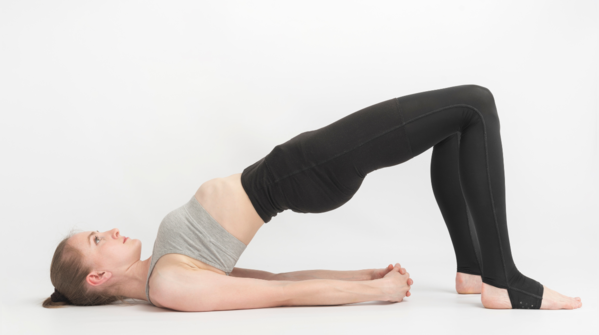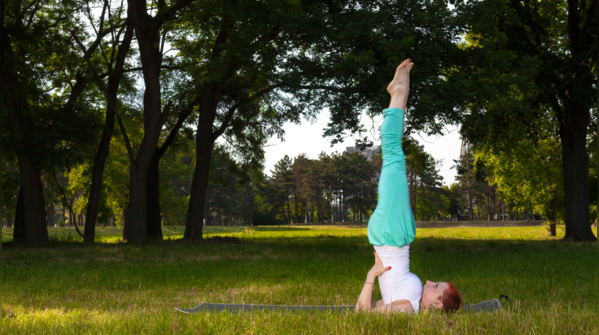Hormones act as vital messengers, influencing mood, metabolism, and sleep. The thyroid gland, though small, plays a crucial role in this system. When the thyroid isn't functioning optimally, it can lead to fatigue, weight fluctuations, anxiety, and menstrual irregularities. The good news is that specific yoga poses, practiced gently and consistently, can support the thyroid gland and promote overall hormonal balance.
This isn't about strenuous workouts or complex contortions. Here are six accessible yoga poses to consider:

This pose calms the nervous system and harmonizes hormone levels. While it doesn't directly stimulate the thyroid, it soothes the adrenal glands, which produce cortisol, the stress hormone. Elevated cortisol levels can disrupt hormonal balance and negatively impact the thyroid.
Its simplicity is a key benefit. Simply lie down with your legs elevated against a wall to relieve tired legs, slow your breathing, and gently guide your body into a more relaxed, parasympathetic state. A relaxed body promotes balanced hormones.

This pose activates the thyroid gland by applying gentle pressure to the neck. It stretches the spine, and the slight compression in the throat area may stimulate thyroid function, making it particularly beneficial for individuals with hypothyroidism (underactive thyroid).
Practiced slowly with focused breathing, this pose also supports the chest and heart, both emotionally and physically, offering a moment of mindful connection.

This pose stimulates thyroid activity by stretching the neck and boosting circulation. As a gentle backbend, Ustrasana opens the front of the body and deeply stretches the neck and throat area, which increases blood flow and nourishes the thyroid.
The chest opening involved can release pent-up emotions. Emotional balance is a critical yet often overlooked aspect of hormonal health.

Ancient texts refer to this pose as the "destroyer of all diseases," suggesting its significant influence on thyroid function. Matsyasana directly stretches the throat, stimulating the thyroid and parathyroid glands. Furthermore, it enhances posture, particularly for those who spend extended periods hunched over computers.
Good posture is crucial. When the neck and spine are properly aligned, nerve signals travel more efficiently, facilitating hormonal signals.

This pose aids in relaxing and resetting the pituitary gland, the master regulator of all hormones. Although Child's Pose appears to be a resting position, it offers significant benefits. It gently massages internal organs, calms the brain, and facilitates a healing state in the body.
Since hormonal balance depends on effective communication between the brain and glands like the thyroid, any pose that calms the brain, like Child's Pose, plays an indirect but valuable role in restoring inner harmony.

Referred to as the "Queen of Asanas," this pose is thought to directly impact the thyroid gland. Sarvangasana increases blood flow to the neck and stimulates the thyroid. It's important to attempt this pose under expert guidance, especially if you have high blood pressure or neck problems.
This pose reverses gravity's effects on the body, sending fresh blood to the neck and head, nourishing the glands, particularly the thyroid. Beyond the physical benefits, this inversion is believed to promote mental clarity and inner calm.
Newer articles
Older articles
 Vitamin D Could Slash Tooth Decay Risk by 50%, Study Suggests
Vitamin D Could Slash Tooth Decay Risk by 50%, Study Suggests
 Indian Cricket Star Mukesh Kumar and Wife Divya Singh Announce Birth of Son
Indian Cricket Star Mukesh Kumar and Wife Divya Singh Announce Birth of Son
 Shubman Gill's Captaincy Under Fire: Bold Calls Needed After England Test Defeat
Shubman Gill's Captaincy Under Fire: Bold Calls Needed After England Test Defeat
 Microsoft Aims for Foldable Redemption with Novel Hinge Design to Rival iPhone and Android
Microsoft Aims for Foldable Redemption with Novel Hinge Design to Rival iPhone and Android
 Popular Finance YouTuber's Account Hacked, Bitcoin Scam Promoted: Security Lessons Learned
Popular Finance YouTuber's Account Hacked, Bitcoin Scam Promoted: Security Lessons Learned
 Esha Gupta Breaks Silence on Hardik Pandya Romance Rumors: 'We Were Just Talking'
Esha Gupta Breaks Silence on Hardik Pandya Romance Rumors: 'We Were Just Talking'
 Hollywood's Love Affair with India: Iconic Film Locations Revealed
Hollywood's Love Affair with India: Iconic Film Locations Revealed
 Rishabh Pant Aims to Surpass Virat Kohli in Test Century Tally During England Series
Rishabh Pant Aims to Surpass Virat Kohli in Test Century Tally During England Series
 Prithvi Shaw Credits Sachin Tendulkar's Guidance for Career Revival After Setbacks
Prithvi Shaw Credits Sachin Tendulkar's Guidance for Career Revival After Setbacks
 Ashada Gupt Navratri 2025: Unveiling Dates, Timings, Significance & Secret Rituals
Ashada Gupt Navratri 2025: Unveiling Dates, Timings, Significance & Secret Rituals